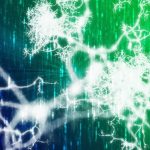In 1906, the father of modern neuroscience, Sir Charles Scott Sherrington, described the central nervous system as “an organ of coordination” that “knits together” the many separate systems of life into a solidarity – a coordinated response of the whole.
 Shin Shin Toitsu is the Japanese name for the style of aikido I have practiced and taught for over thirty years. Translated into English it means “heart, mind, and body threaded together as one.” The words echo Sherrington’s — the recognition not simply of a connection between body and mind, but of a whole living being in which multiple systems weave together as one.
Shin Shin Toitsu is the Japanese name for the style of aikido I have practiced and taught for over thirty years. Translated into English it means “heart, mind, and body threaded together as one.” The words echo Sherrington’s — the recognition not simply of a connection between body and mind, but of a whole living being in which multiple systems weave together as one.
While Sherrington’s revelation of the integrative nature of the brain remains the least studied of his many insights, in the last decade scientists have begun to look in depth at how the brain threads it all together. The neural reality of interconnection between feeling, thought, and movement comes to light across a broad range of brain research.
insights, in the last decade scientists have begun to look in depth at how the brain threads it all together. The neural reality of interconnection between feeling, thought, and movement comes to light across a broad range of brain research.
That research makes scientific sense of the experience of mind/body connection and sheds light on how and why Ki-Aikido training impacts well-being and performance beyond the physical techniques. It also opens a door of understanding into why an array of “balance-in-motion” movement practices – from dance and tai chi to bicycling and horseback riding – impact health and wellness.
Knitting together information from multiple threads of brain research, this blog explores the integrative neuroscience as it relates to everyday experience and the impact of balance-in-motion movement practices.
